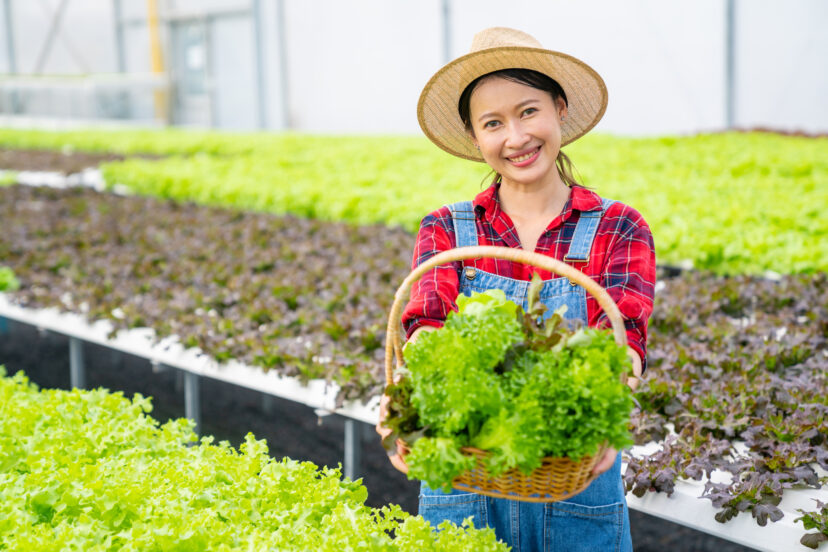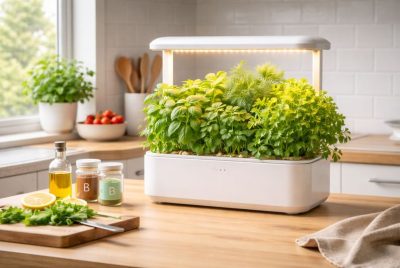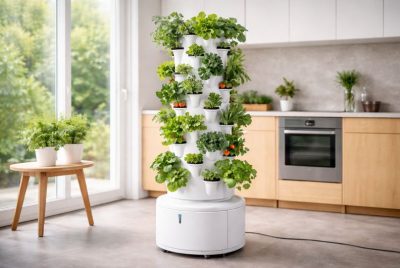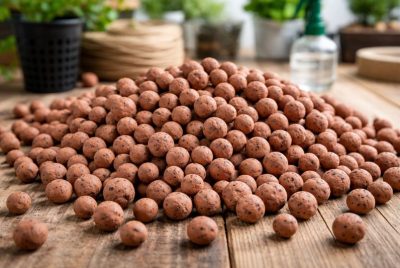Hydroponic Plants: A Step-by-Step Journey to Growing Without Soil
We may earn a commission for purchases made using our links. Please see our disclosure for more details.
Are you eager to grow plants but unfortunately, you lack the basics to get started like soil, enough space, or time? Truth is, soil gardening can be a challenge especially if you’re not blessed with a “green thumb”. But fret not! With hydroponics, you can grow plants without soil, in small spaces, and with less effort. In this guide, you’ll learn the step-by-step of how to build a hydroponic garden and the kinds of hydroponic plants to grow. Let’s get started!
What Are Hydroponic Plants?
Hydroponic plants are those plants/crops that are grown through a hydroponic system, using nutrient-rich water, without soil. Instead of relying on natural soil nutrients, these plants get their food directly through the water (no need to dig in the dirt). However, plant roots still need something to hold onto so they are planted on a growing medium such as coco coir, rockwool, or perlite. It’s efficient, clean, and often more productive than traditional gardening.
Why Choose Hydroponic Gardening?
Wondering why you’d choose hydroponics over traditional gardening? Hydroponics offers several advantages:
- Space Efficiency: Perfect for small spaces or urban settings.
- Faster Growth: Plants grow faster because they get nutrients directly to the roots.
- Less Water Usage: Uses up to 90% less water than traditional gardening.
- No Weeds: Say goodbye to weeding!
- Pest-Free: Fewer pests to worry about, as there’s no soil involved.
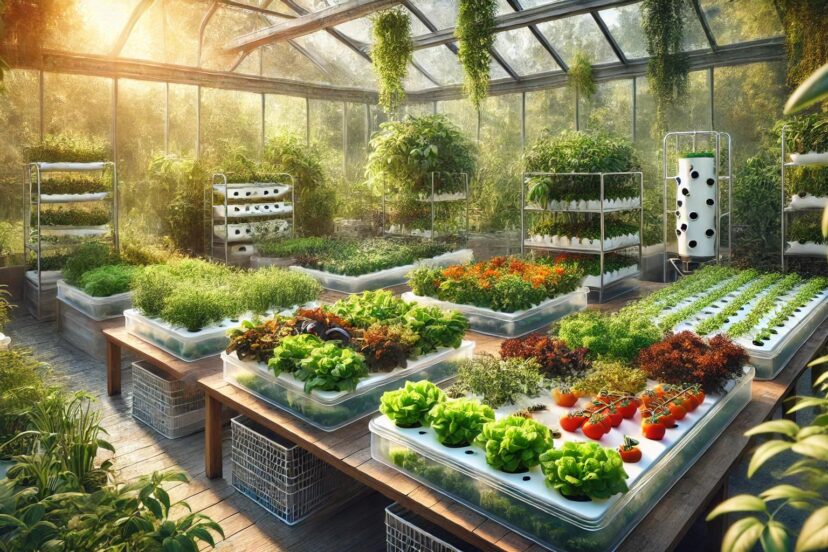
Types of Hydroponic Systems
There are several hydroponic systems to choose from depending on your needs and space. Here’s a quick list of the most popular types among gardeners:
1. Deep Water Culture (DWC)
Imagine your plants floating in a pool of nutrient-rich water. That’s DWC! Here, the roots dangle in oxygenated water, absorbing nutrients directly. It’s like they’re on a never-ending lazy river, soaking up all the good stuff without a care in the world.
2. Nutrient Film Technique (NFT)
NFT is my hydroponic setup (since I like to grow different kinds of lettuce) and here, roots get a thin stream of water flowing steadily over them, just enough to keep them hydrated and fed. This system works wonders for smaller, leafy plants. Think of it as a gentle, nutrient-rich river that the roots can dip into whenever they need a refresh.
3. Aeroponics
Aeroponics is a more high-tech approach. Here, the plant roots hang out in mid-air and get misted with nutrients. This method uses the bare minimum amount of water—but it demands a delicate balance. Keeping the misting just right can be tricky, but when done right, plant’s grow fast and healthier.
4. Wick System
Another recommended system for newbies is the Wick system. It’s as simple as placing a wick in the water reservoir, which draws nutrients up to the plant roots. No pumps, no fuss, no drama!!! Just a steady flow of water. Plus it’s a low-maintenance setup which is great of you’re just learning about hydroponics.
5. Ebb and Flow
In this system, the plant bed floods with nutrient-rich water periodically, then drains away, letting the roots breathe before the next cycle. It’s a right balance between hydration and oxygenation, giving plants the best of both worlds.
Getting Started with Hydroponic Plants
Ready to build your dream hydroponic garden? Great! Here’s a list of essentials you need to get started:
Essential Materials
- A hydroponic system (For newbies, try DWC. It’s the easiest!)
- Growing medium (Coconut coir is my go-to but rock wool is also good)
- Nutrient solution tailored for hydroponics (Try general hydroponics flora series)
- pH test kit to maintain water quality (This is a must-have!)
- LED grow lights if you’re growing indoors (Optional)
Selecting the Right Plants
Let me get things clear here, not all plants flourish in a hydroponic setup but leafy greens, herbs, and some fruits thrive in these systems. If you’re a beginner, it’s best to start with lettuce (works fine for me). Let’s break it down even more:
Herbs – Basil, mint, cilantro, and parsley are ideal for hydroponic systems. They’re relatively low-maintenance and grow quickly.
Leafy Greens – Lettuce (my personal favorite cause they grow fast), spinach, and kale are easy to grow and perfect for fresh salads year-round.
Fruits and Vegetables – Want to take it to the next level? Try tomatoes, peppers, or even strawberries. However, they require more attention and experience.
Setting Up Your Hydroponic Garden
Now that you’ve decided which system to use and what plant to grow, it’s time to set up your hydroponics system. Here are the steps you can do:
1. Choose Your System
By this time, you should have already decided which system to use. If not, assess your needs, space, and budget (bigger systems might be a bit pricey). Well, I started with NFT cause it works for me but if you’re space and budget are limited, start with DWC. You can always upgrade moving forward.
2. Prepare the Growing Medium
There are different types of growing mediums so choose the one that can support your plant’s roots well. No idea at all? Research online what’s best for your chosen plants. You can also join social media groups and even Reddit for support from fellow gardeners.
3. Add Nutrients
The nutrient solution is like the lifeblood of your hydroponic garden. Without it, your plants won’t thrive! That is why choose a nutrient mix formulated for hydroponics and follow the recommended dosage carefully. I’m using general hydroponics, you should try them too!
4. Monitor pH Levels
Hydroponic plants need a specific pH range, typically between 5.5 and 6.5. Regular testing helps maintain the right balance for optimal plant health. If you’re not sure, research the recommended PH range for the plant of your choice. Remember, this step is crucial. Higher pH levels might mess with your plants.
5. Provide Light
If you have plans of taking your gardening indoors, well, you need good lighting. Especially if your plants were placed in a corner away from natural sunlight. Invest in LED grow lights to mimic sunlight. Plants need light to photosynthesize and grow strong.
Recommended Products for Starting Your Hydroponic Garden
Alright green thumbs, having the right tools and products can make all the difference. Here are what I recommend to get you started:
- Hydroponic System Kits
- Deep Water Culture Kit: Ideal for beginners, includes a water reservoir, net pots, air pump, and air stones.
- Aeroponic Tower System: Perfect for advanced growers looking to maximize vertical space and grow multiple plants.
- Nutrient Film Technique (NFT) System: Great for leafy greens and herbs, includes channels for water flow and nutrient delivery.
- Growing Mediums
- Coconut Coir: A sustainable option that retains water and nutrients well.
- Clay Pellets: These are reusable, provide good aeration, and are popular in many hydroponic setups.
- Rockwool Cubes: Easy to use and retain moisture, ideal for seed starting in hydroponics.
- Nutrient Solutions
- General Hydroponics Nutrient Pack: Contains essential nutrients for plant growth, including micro and macronutrients.
- FoxFarm Hydroponic Nutrients: Organic and balanced, providing plants with what they need to thrive.
- Advanced Nutrients Trio: A three-part solution that supports different stages of plant growth.
- pH Testing Kits and Adjusters
- pH Testing Kit: Simple to use, ensures your plants are within the ideal pH range.
- pH Up and pH Down Adjusters: Essential for fine-tuning the nutrient solution for optimal plant health.
- LED Grow Lights
- Full-Spectrum LED Grow Lights: Mimic natural sunlight, ideal for indoor setups.
- Adjustable LED Panels: Flexible for various plant heights and perfect for small hydroponic spaces.
- Clip-On Grow Lights: Space-saving option that works well for small herb gardens and tabletop systems.
Maintaining Your Hydroponic System
In hydroponics, maintenance is key to having healthy plants. It’s not that complicated! Here are some steps to keep your system (and plants) in tip-top shape:
Check Nutrient Levels
You’ll be surprised how plants devour and empty your nutrient water supply faster than you thought. Can you imagine, my lettuce dries up in just a week? Man, they’re hungry!!! Over time, they’ll deplete the nutrient-rich water, so keep an eye out and replenish it whenever necessary to keep them thriving.
Monitor Water Levels
Water is like the heart and essence of hydroponic systems. Did you know that water levels can drop quickly, especially in smaller setups? Yeah, that’s right. So, to make sure your plant won’t thirst to death, make it a habit to check the water. Your plants deserve and need a steady supply of nutrients on hand.
Clean Regularly
Cleaning is also a big part of hydroponics. I used to check every 3-5 days if there’s algae growth in my system since it’s prone to that. A clean setup means healthier plants. That said, please clean your system regulary (every 1-2 weeks if you can). It can help prevent algae and disease from sneaking in. Just think of it as a good exercise!
Common Challenges in Hydroponics
Hydroponics is not exempted from bumps along the way. Don’t worry, I’ll help you get through them. Here’s what you should do just in case you face one of them:
Nutrient Imbalance
Notice some yellow leaves and deformities? Probably because of a nutrient imbalance. Sometimes, plants can show signs of too much or too little of a particular nutrient. A quick tweak to the nutrient solution often does the trick.
pH Fluctuations
In hydroponics, pH levels don’t stay still—they tend to wander a bit. And this is kinda tricky, based on my experience. A PH testing kit works wonders! Adjust PH levels as needed. It helps maintain a stable environment for your plants.
Root Rot
Seeing root rots? Don’t panic!!! It’s pretty common. If roots end up in stagnant water without enough oxygen, expect this to happen. What you need to do is, ensure your system has proper aeration, which is crucial for setups like DWC. Keep those roots fresh and oxygenated.
Harvesting Hydroponic Plants
Onto the most awaited part, harvest time!!! I find it so much rewarding to harvest fresh leafy greens that I grew myself. After all the TLC, I can now enjoy fresh and organic lettuce. Isn’t that lovely? Harvest plants right from your backyard or kitchen. And the best part? With hydroponics, you might see faster growth than with traditional soil! For herbs and leafy greens, just trim what you need and let the plant keep growing. For fruits and veggies, pick them once they’re fully ripe for that peak flavor. Enjoy it with your friends and family!
Sustainability and Nutrient Efficiency in Hydroponics
Hydroponics offers a promising solution for eco-friendly agriculture, reducing water usage and minimizing soil-borne diseases while enabling year-round crop production. Research on hydroponics as an eco-friendly agricultural method highlights its potential to address environmental challenges faced by traditional farming (Springer). Additionally, effective nutrient recycling in hydroponic systems can enhance plant growth and resource efficiency, making hydroponics both sustainable and productive (Frontiers in Plant Science).
Conclusion
There’s something good about growing plants without being an expert. Harvesting fresh crops and eating healthier fruits and vegetables at home is a reading experience. Although not all plants thrive in a hydroponic system, there are many hydroponic plants you can choose from like lettuce, herbs, and even tomatoes. So, are you ready to dive into hydroponics?
FAQs
1. Can I grow any plant hydroponically?
Not really but you can try leafy greens, herbs, and certain fruits like tomatoes and strawberries. These are great choices!
2. How much does it cost to start a hydroponic system?
It usually depends on the system and materials. A basic setup can start at around $50, while advanced systems may cost hundreds of dollars.
3. Is hydroponic food safe to eat?
Yes, hydroponically grown food is safe to eat. In fact, it’s often cleaner and free from soil contaminants and pesticides.
4. Do hydroponic plants need sunlight?
If grown indoors, hydroponic plants need artificial light to replace sunlight. LED grow lights work well for this purpose.
5. When should I change my hydroponic system’s water?
For best results, change the water and nutrient solution every two weeks. Regular monitoring ensures plants receive a balanced diet.

